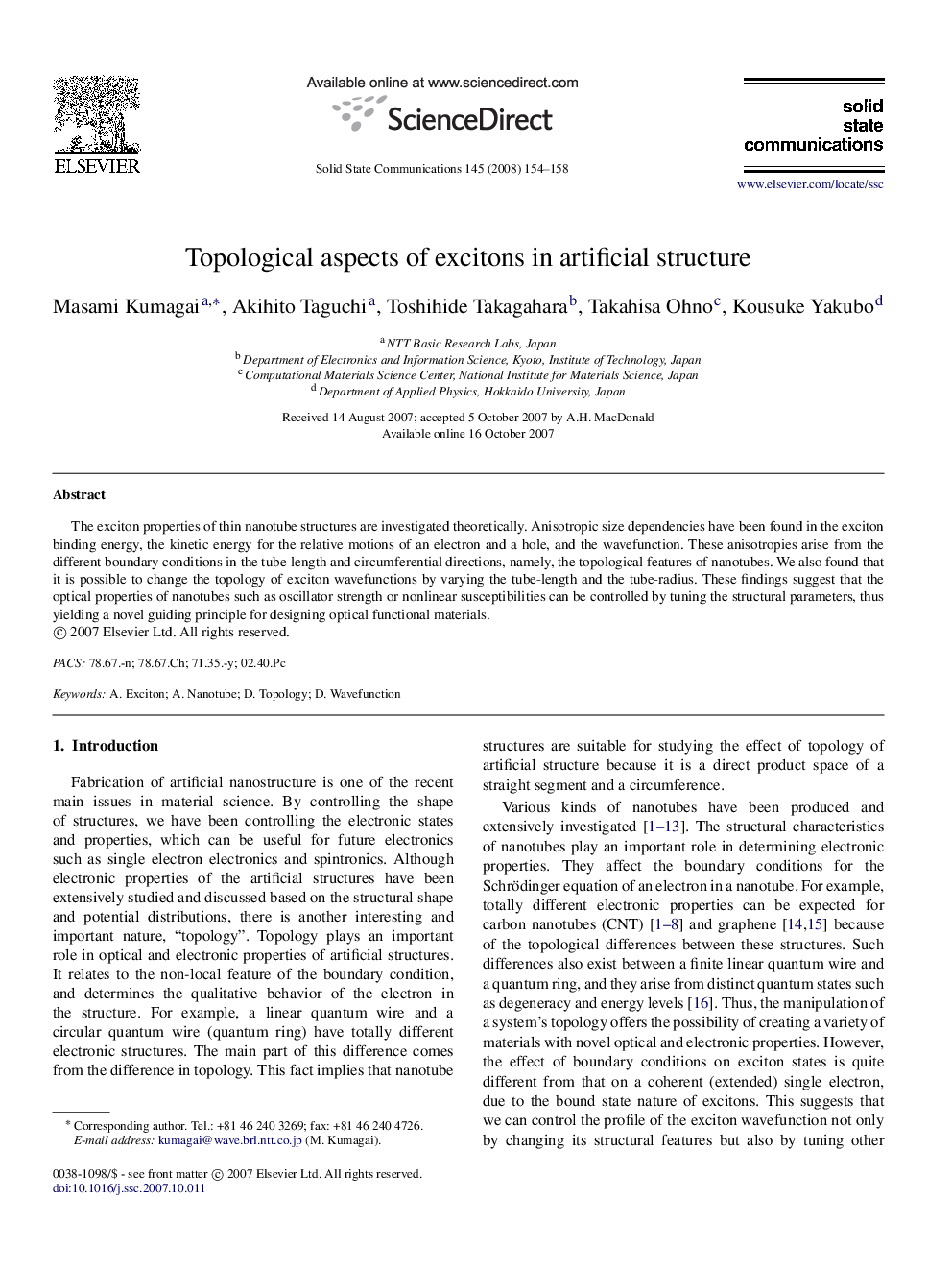| Article ID | Journal | Published Year | Pages | File Type |
|---|---|---|---|---|
| 1595137 | Solid State Communications | 2008 | 5 Pages |
Abstract
The exciton properties of thin nanotube structures are investigated theoretically. Anisotropic size dependencies have been found in the exciton binding energy, the kinetic energy for the relative motions of an electron and a hole, and the wavefunction. These anisotropies arise from the different boundary conditions in the tube-length and circumferential directions, namely, the topological features of nanotubes. We also found that it is possible to change the topology of exciton wavefunctions by varying the tube-length and the tube-radius. These findings suggest that the optical properties of nanotubes such as oscillator strength or nonlinear susceptibilities can be controlled by tuning the structural parameters, thus yielding a novel guiding principle for designing optical functional materials.
Related Topics
Physical Sciences and Engineering
Materials Science
Materials Science (General)
Authors
Masami Kumagai, Akihito Taguchi, Toshihide Takagahara, Takahisa Ohno, Kousuke Yakubo,
